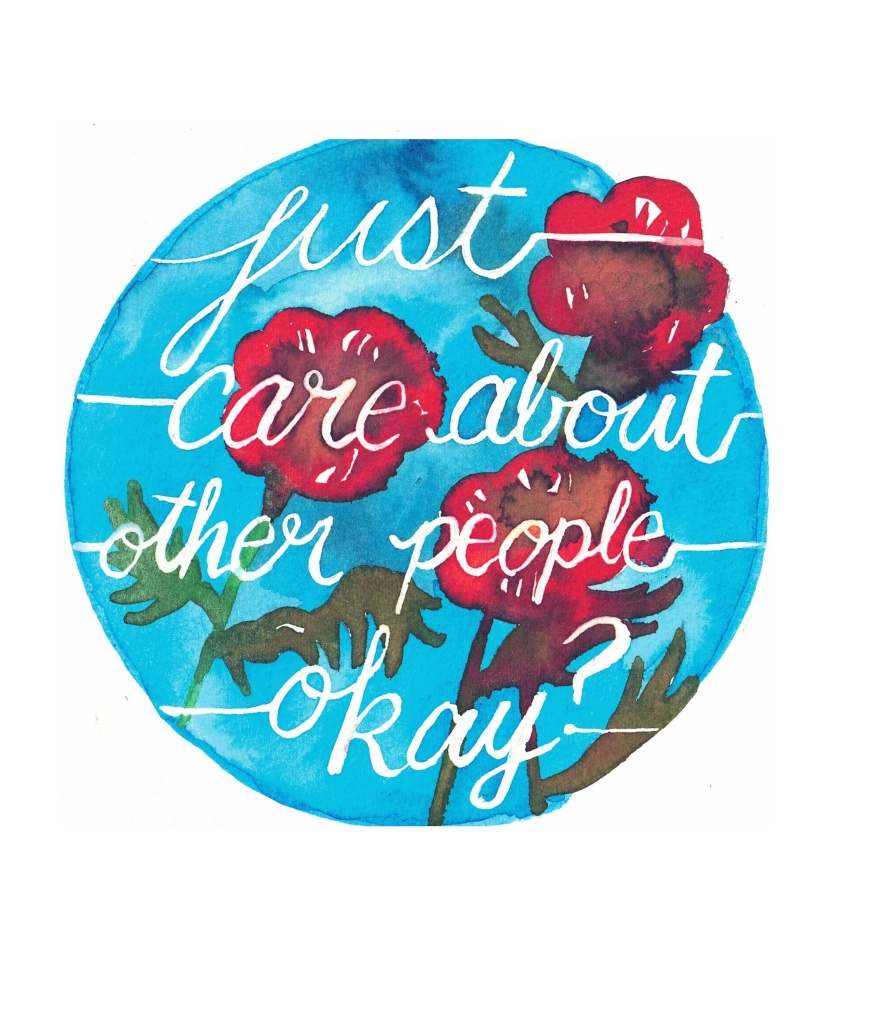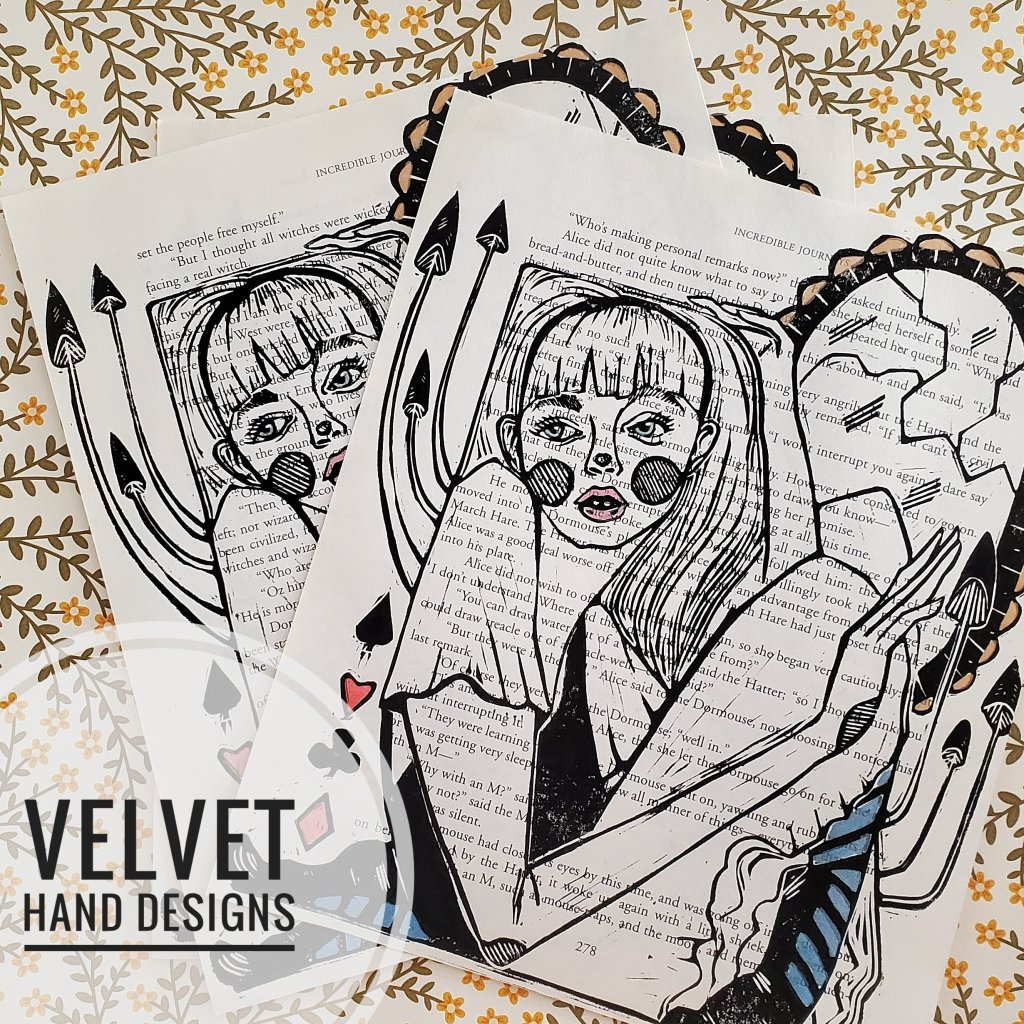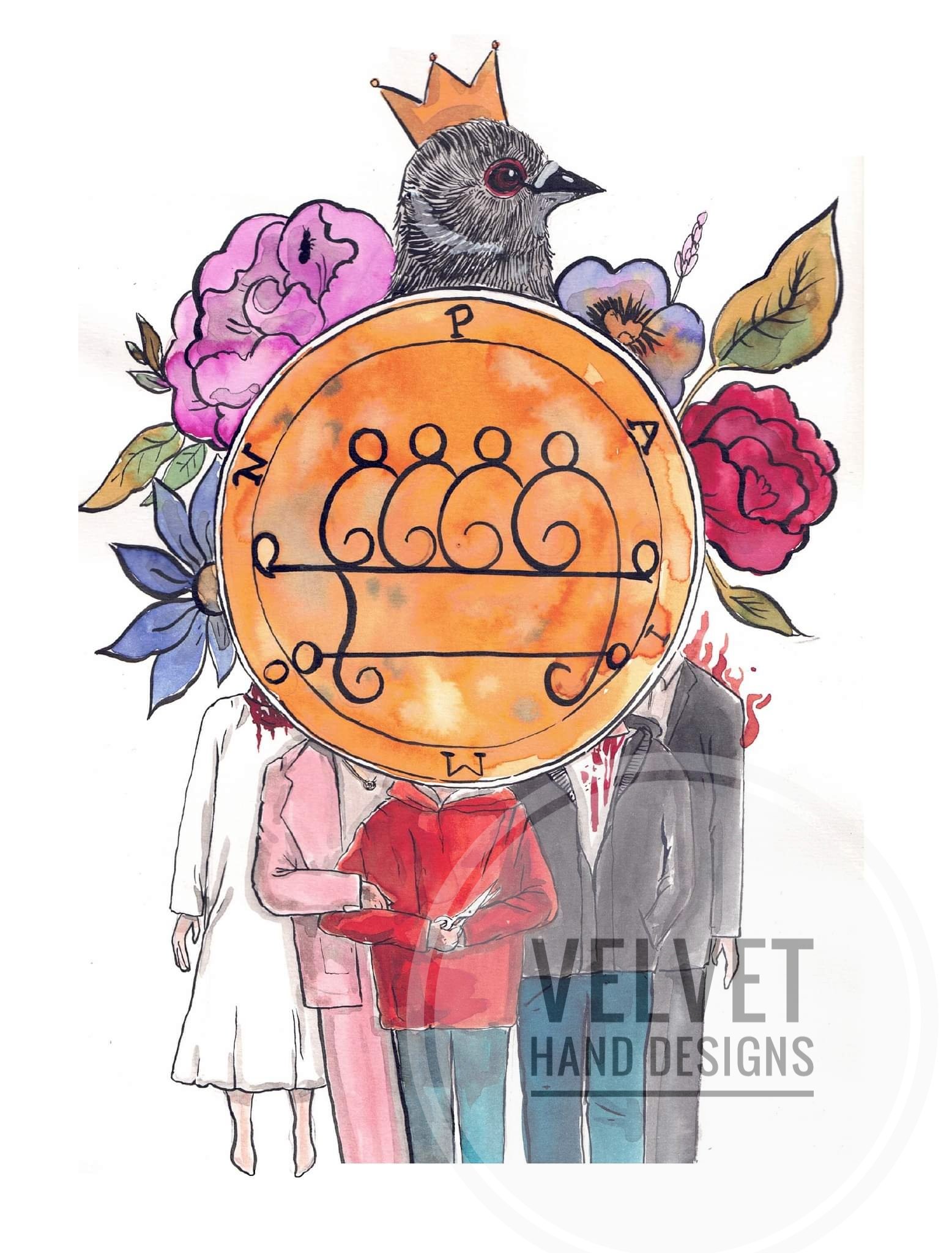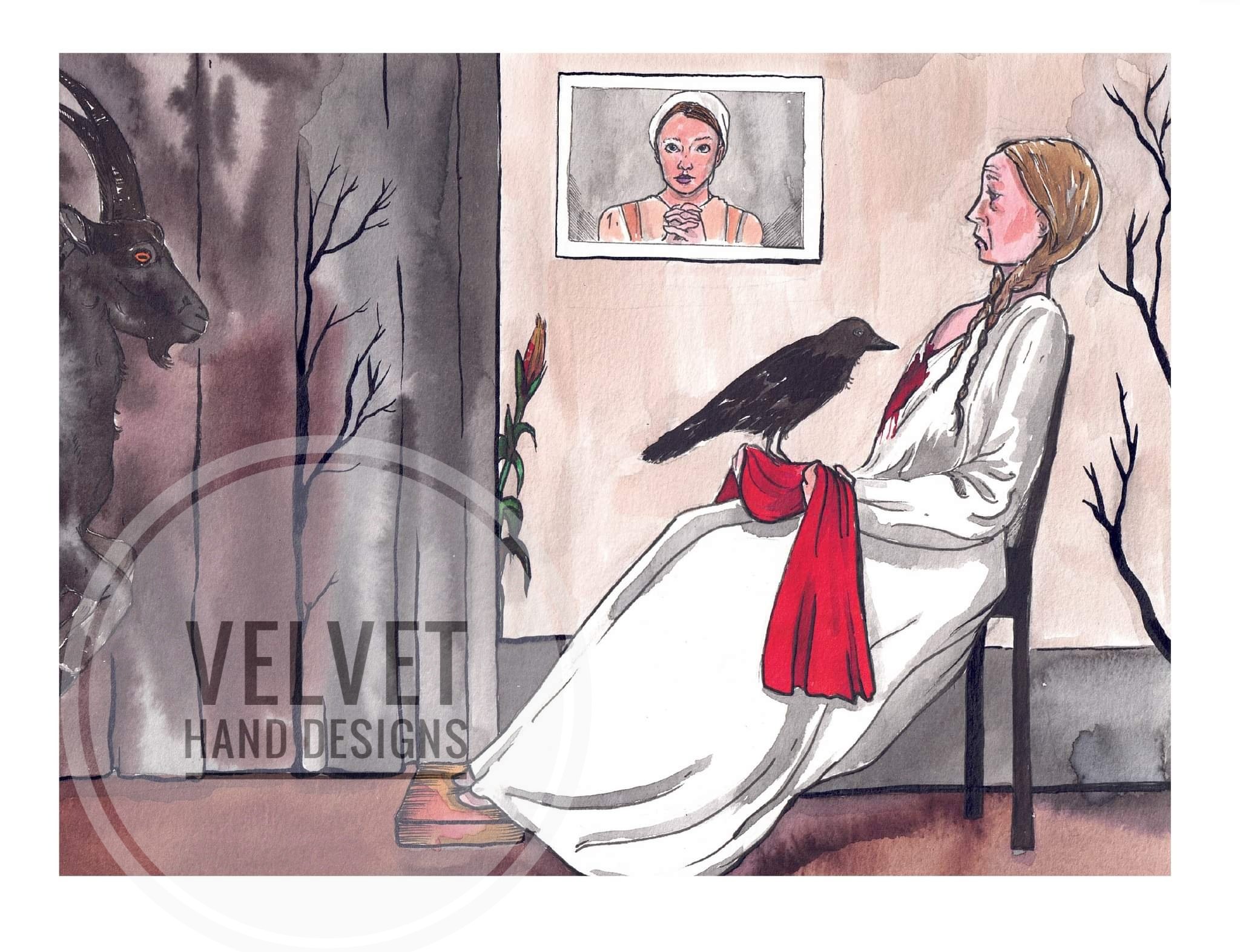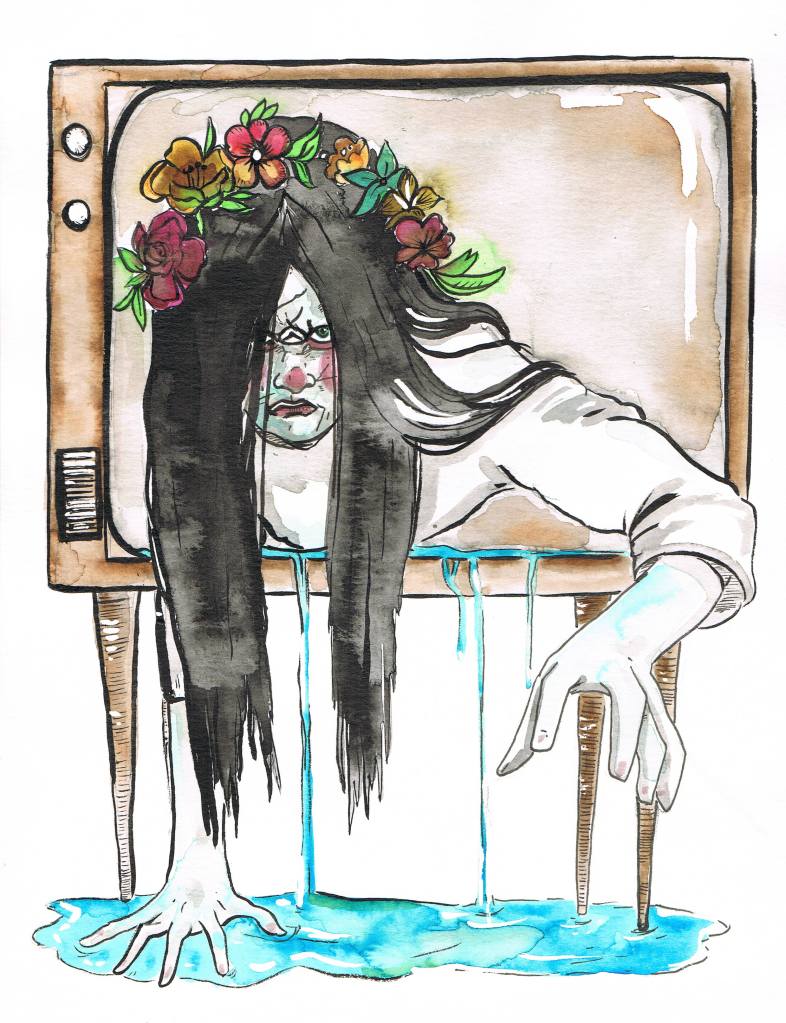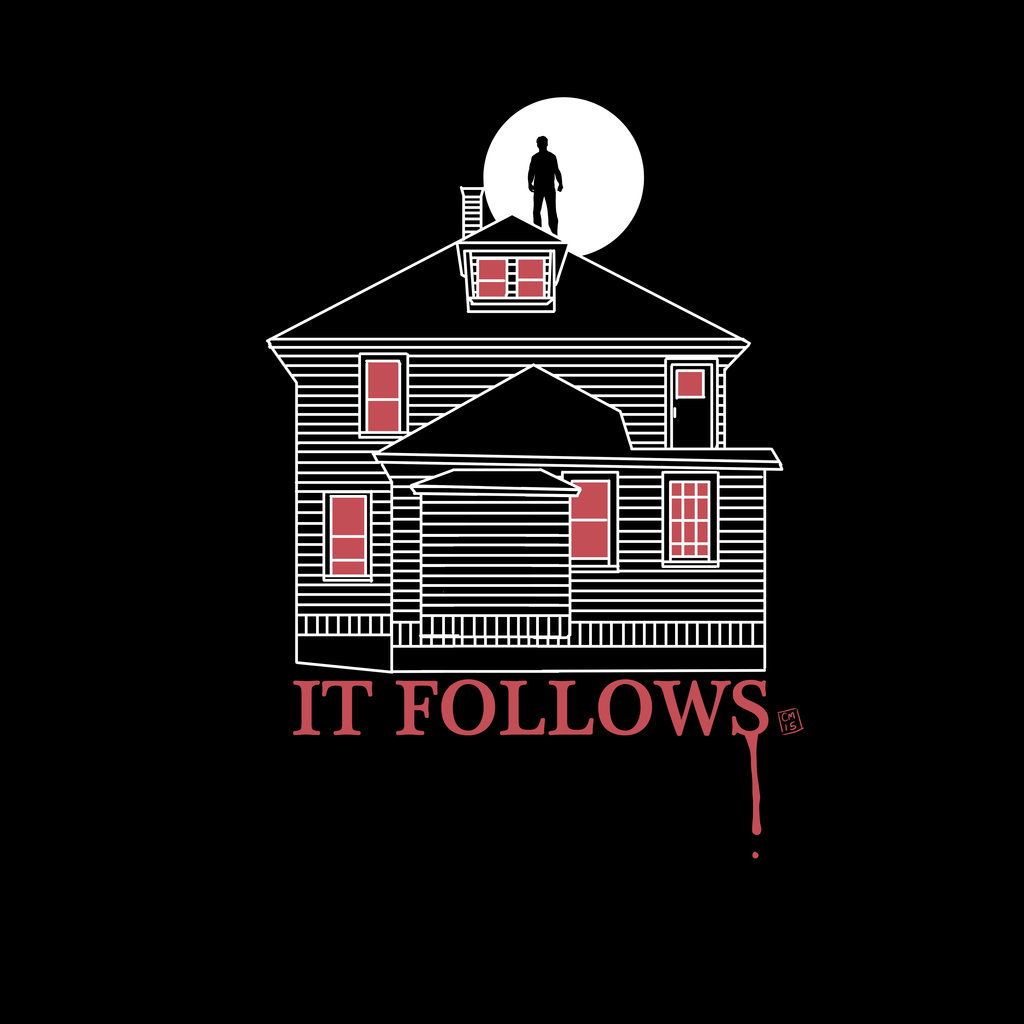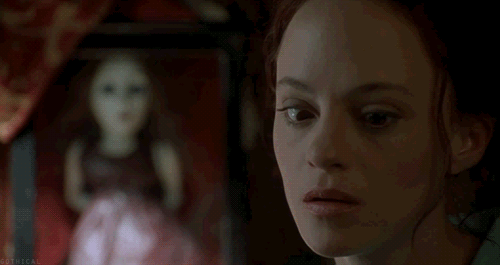Here I am, at the low point on the roller coaster of depression and anxiety. By that, I don’t mean a calm and soothing moment of relief, but a frazzled, doom obsessed, sleep-for-a-year valley. As usual, I seek out horror to provide me with that old faithful burst of sensation, the safest way to feel when all you want is to remain numb. Horror soothes, it helps to disconnect, and provides that needed escape that we are so often seeking.
All this is to say: my horror viewing has not ceased. What has slowed to a crawl is my analytic passion. Well, maybe not the passion, perhaps just my ability to focus. I’ve been over here intermittently typing away my perception of Julia Ducornau’s Titane, chipping away and somehow barely even making a dent in a gargantuan synopsis. I have FEELINGS about that film, for better or worse, but I simply cannot streamline my mind to produce a cohesive piece.

I feel like I have the wherewithal to pore over horror in a conversational way, but these old bones are just so tired. I find I’m feeling most gratified, lately, by horror docs. Bite-sized bits of horror and it’s impacts and inspirations are serving up the dosage I need. Woodlands Dark and Days Bewitched (Kier-La Janisse ) was an absolute joy to experience. It’s a long haul, and I could have watched it for two more hours. What an absolutely comprehensive collection of one of my favorite genres!
I’ve allowed myself to mentally check out and absorb tiny morsels of 80s horror through the In Search of Darkness docs (David A. Weiner). It’s, essentially, a warm horror bath for the soul.
Some of the films I’ve endeavored to watch recently include The Last Thing Mary Saw (Edouardo Vitaletti), The Scary of Sixty-First (Dasha Nekrasova), Antlers (Scott Cooper), and Scream 4 (Wes Craven, of COURSE).
My thoughts? Slow, Gross, exclusionary and delightful, respectively. Mary, I found so subtle and quiet that it felt like being slowly pulled into a pit of quicksand and being fully lost to time. I’m here for a period piece, and queer horror? Come on! Perfection. But Mary nearly put me to sleep. Then again, I AM depressed, so perhaps I’m just looking for excuses to nap.
The Scary of Sixty First is a film I won’t soon forget but will never again experience. Sparsely produced, it emulates the style of exploitation films of the 70s, and, in truth, it does not shy away from exploitation. In fact, it builds it’s plot around it. Quite frankly, I’m more inclined to become squeamish about sexual exploitation than extreme gore, and this film about drowned me in it. Unsettling, grimy and downright gross at times, Scary was decidedly NOT for me.
Now, Antlers felt like a traditional big budget horror film with high production values and recognizable faces. While the bones of Antlers compelled me, and while I felt the film wanted to talk about intergenerational trauma as it pertains to drug use and poverty, it felt like a film that ran with indigenous folklore without indigenous voices. Yes, there is one notable indigenous character who acts as a magical fount of knowledge, only so far as he nudges the plot along by explaining the monster briefly. That being said, it felt like a film that really suffered from the loudest voices being non-indigenous. And for a film that’s exploring trauma passed on to children, what a glaring omission when we consider the traumatic legacy of residential schools.
Moving on to Scream 4. Somehow, I had gone this long without ever having seen this return to Sidney and the Woodsboro crew. In honor of the release of Scream 5/2022, it was a requirement (….I haven’t seen the newest one, mind you.) Well installment number 4 is just a gosh darn delight, allowing us to tag along with a new high school crowd full of really enjoyable characters. I know, I know, I’m the only one who missed out on Scream 4, but what a wonderful highlight of my recent watching.
One more honorable mention in my recent horror consumption: Scared Sacred: Idolatry, Religion and Worship in the Horror Film from House of Leaves publishing. I received a copy of this book for Christmas and joyously pored over essays on The Conjuring, Martyrs, Hellraiser, The Amityville Horror and a plethora of religious themed horror from writers such as Alex West, Andrea Subisatti, Rebecca Booth and Amanda Reyes. I am fascinated by the horror of religion, and this book scratched an itch for me. Lots of great essays!
Anywho, thanks for taking a second to read what I’ve been up to, and please, let me know what you’ve been watching, reading and listening to. I have high hopes of creating some more in depth analyses of the horror films that really stick with me, but I just do not have the capacity now. But in the interest of keeping that hope alive, must post!
Take care, creeps.
P.s. One line review of Texas Chainsaw Massacre 2022:
This film felt like riding a bus on a Universal Studios lot, driving past the Psycho House and having Norman Bates chase you away as the crowd giggles awkwardly at our own absurdity; boring, displaced and cardboard.
